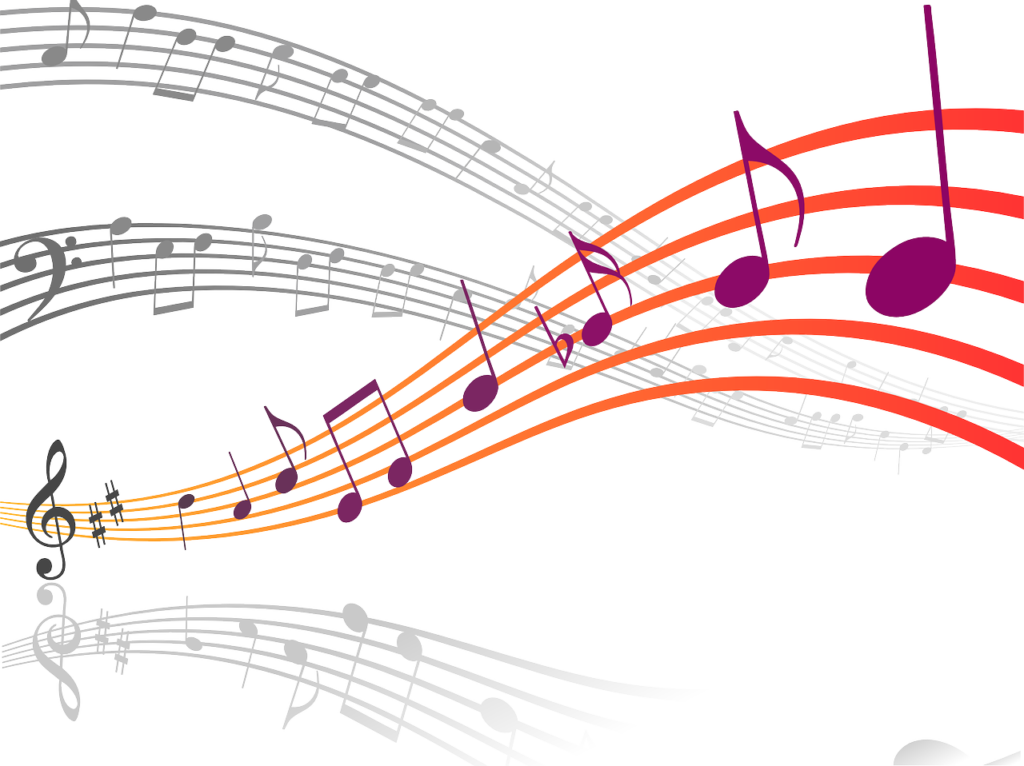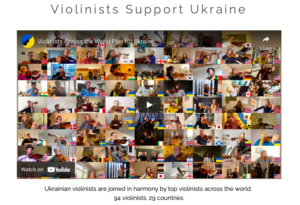On 24 February 2022, the Russian army invaded Ukraine, starting the first international land war in Europe since World War II. This in turn triggered a large movement of forced migrants across Ukraine and Europe. At the time of writing, 10 million people have fled their homes, 3.6 million of whom have left Ukraine.[i] Thousands have died in the conflict, and thousands more have been injured, both physically and psychologically.[ii]

Our research into stretching the boundaries of how we understand peace and conflict led me to discover peace as an act of care – which can occur amidst conflict, not just in more stable times. Part of my ‘Pockets of Peace in Ukraine, Spring 2022’ project, ‘Care through Music’ is one of three macro trends I identified on Twitter that reflect a larger outpouring of acts of care and empathy during the war in Ukraine, both despite and because of the overarching context of violence. This trend foregrounds the efforts humans have made to make, listen to and relish music while the war raged on.
In 2020, we saw how music allows us to express ourselves despite structural constraints, when neighbours in Italy performed ‘balcony concerts’ during the public health lockdowns that occurred during the Covid-19 pandemic. Despite physical separation, these concerts connected neighbours and a community, bringing pleasure and reinforcing solidarity during one of the hardest times of their lives. Music-making is a dialogue that involves harmony—both musically and in the relationships between musicians, and musicians and their audience—and it is inherently collaborative. There is some research into the role that music plays in transforming conflicts,[iii] an emerging field that deserves greater focus and aligns well with the Visualising Peace agenda in re-imagining what peace can mean.
Visualising Peace with our ears…

While not necessarily an act of care or empathy, music is a universal language that allows us to communicate without words. I want to take this communicative function a step further, and view music as an act of peace-building both internally and communally. Three tweets highlighted here depict different events, but similar themes of resilience and hope emerge.
In Odessa, a band plays while a city prepares for pending invasion. Although it is a still image, it reminds me of military cadences or sea shanties—songs that helped the listeners attempt to complete their tasks.[iv] Upbeat and motivational, it generates a sense of energy and positivity, and citizens might well draw strength from hearing their neighbours playing, gaining courage to go on even when invasion looms on the horizon.

At the other end of the spectrum, a pianist plays her last piece on her grand piano after her apartment was destroyed and she prepares to leave her home forever. As the caption reads, ‘After all this destruction, music & hope survives…’. The connection between music and hope is crucial. Her playing defies the ugliness of war and the rubble she must move off her beloved instrument. There is tragedy as well as hope, since the pianist is playing a final farewell before leaving her apartment and her pre-war life for an uncertain future. The music, however, has been captured for eternity and cannot be destroyed. This ‘farewell performance’ creates a link between past life and future possibilities, and between an individual’s experience (and a brief interlude of inner peace) and the wider world. Every time another musician strikes up a tune in another place of conflict, the same small act of resistance and communication is played out, reminding us that music cannot be silenced and people will always find ways to share what they love.

This truth – that conflict is limited, and cannot prevail over music or the human spirit – is a sentiment that crops up frequently in Mosul Eye’s tweets: ‘Life Wins, Music Wins…’. It is at the heart of projects like the Nineveh Water Youth Orchestra, which ‘represents the antithesis of everything Daesh stood for in its divisive and isolationist values… Through music, the orchestra provides a tool for creating a universal and inclusive language of belonging that reaches beyond all educational, linguistic and social constructs. The Nineveh Youth Orchestra employs music to build new collective identities amongst its musicians and audiences, bringing peace and healing to the traumatised people of Nineveh and celebrating the province’s diverse ethnic mix.’ A similar project is already emerging for young Ukrainians who have fled their homes due to the war, with the development of a Ukrainian ‘youth orchestra in exile‘. Life wins because music and music-making are hopeful, healing and regenerative.

This final tweet shows a cellist playing in front of a destroyed apartment building in Kyiv. A man in the background collects his belongings. Similar to the pianist, this video demonstrates the endurance of music (and peace) within, and despite of, war. In contrast to the pianist, this video shows us hope in a different way. Instead of a farewell, this music is building peace: the apartment is crushed, but the rubble becomes an amphitheatre; the apartment is crushed, but a cellist finds time to produce art; the apartment is crushed, but human communication and the desire to share something beautiful with others continue on. This continuance of music is a continuance of freedom, care and life itself. It reminds us that conflicts will always end, while the things we loved before will give us strength through the dark times, keep us in contact with each other, and flourish again despite all the challenges.

Just as music can flow out of a conflict zone, signalling hope and reslience, so it can also flow in, bringing care and solidarity. In early March 2022, a violinist based in London reached out via Instagram to fellow violinists in Ukraine. Within 48 hours she had brought 94 violinists from 29 different countries together to record a Ukrainian folk song which went viral online. Some of the Ukrainian violinists recorded their parts from basement shelters in between bomb blasts. They found pockets of peace in which to make music with others – and the music they made then resonated out into the wider world as an act of International friendship, solidarity and peace-building. Violins playing in harmony together, embodying the wider peace they hope to see.
When music endures through conflict, so do hope and ways of finding and making peace. In the social media posts I have looked at, music is a powerful symbol of human resilience, and also a powerful peace-building tool: a language we can all understand that transports us out of conflict to a better place.
What do you think?
- What role does music play in your everyday life?
- Does music bring you inner peace?
- In what ways do you think that music can build peace at the level of society, nation or world?
- Can you think of other conflicts where music has played a role? Is it always a positive thing? For example, the West-Eastern Divan Orchestra is a dialogue-building initiative between Israeli and Palestinian musicians. At the same time, Brauer 2016 argues that music was used as a form of torture in Nazi concentration camps. Can music facilitate both peace and violence?
If you enjoyed this item in our museum…
You might also like ‘Peace through Movement‘, ‘Pockets of Peace in Ukraine, Spring 2022: A Reflection‘, ‘Care for Animals‘, ‘Care for Nature’, and items with the tag ‘Care‘.
Grace Bitner, May 2022
[i] These statistics have been published by the UN, on the basis of research carried out by the International Organisation for Migration (IOM) between 9 and 16 March. As this BBC article notes, the actual figures are likely to be even higher.
[ii] This podcast reflects on the long lead-up to Russia’s invasion of Ukraine in February 2022: https://www.buzzsprout.com/1717787/10586724. Among other topics, it discusses the role played by social media in shaping how people have visualised the conflict, and also how people on the ground and far away have engaged with in and offered support.
[iii] For example, see Phillips-Hutton 2020.
[iv] Cadences were used to keep up morale and also helped soldiers/sailors stay synchronised in their movements. You may have heard the New Zealand sea shanty ‘Wellerman’, which became a viral trend on TikTok in 2021. Those academically interested in this topic should see Herbert and Barlow 2013 (DOI: 10.1093/acprof:oso/9780199898312.001.0001) for an overview of British military music in the long 19th century, including marching cadences.